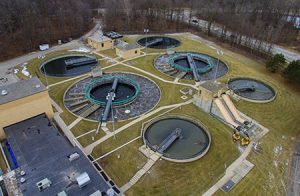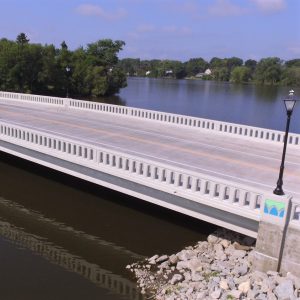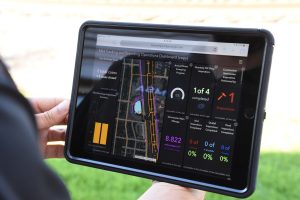The Infrastructure Investment and Jobs Act (IIJA), more commonly referred to as the Bipartisan Infrastructure Law (BIL), is poised to deliver a comprehensive influx of critical funding for community infrastructure projects across the nation. While program details, deadlines and exact dollar amounts are still rolling out, state and local leaders must be at-the-ready to competitively pursue BIL funding in order to reap the benefits.
Programs at a glance: past, present, future
Recent financial investments from the federal government can best be segmented into three buckets: past, present and future. Let’s take a look at some relief funding that has already been distributed and some of the larger investments that are coming down the line.
1. CARES and ARPA
In March 2020, the first component of economic recovery funding was delivered through the Coronavirus Aid, Relief, and Economic Security (CARES) Act. This delivered emergency payment, unemployment, and loan assistance to individuals and businesses across the country adversely impacted by the COVID-19 pandemic.
In March 2021, Congress passed the American Rescue Plan Act (ARPA) which further bolstered economic stimulus efforts. ARPA helped expand unemployment benefits, continue direct payments to individuals, offer paid emergency leave, extend a variety of tax and child/dependent care credits and provide grant assistance to small businesses, local, tribal and state governments. It also allocated a great deal of funding for housing, transportation, agriculture, cybersecurity, and vaccine testing and distribution.

On January 6, 2022, the U.S. Treasury published what is called the “Final Rule” for the Coronavirus State and Local Fiscal Recovery Funds (SLFRF) program — a subdivision of ARPA designed to target state and localized needs. The new rule takes effect April 1, 2022 and addresses four eligible use categories: lost public sector revenue, public health and economic impacts, premium pay for eligible essential workers, and investments in water, sewer and broadband infrastructure. Under the SLFRF, funds must be used for costs incurred on or after March 3, 2021. Those costs must be obligated by December 31, 2024 and expended by December 31, 2026.
2. Bipartisan Infrastructure Law (BIL)

On November 15, 2021, President Biden signed the Bipartisan Infrastructure Law (BIL) — the largest broad-reaching investment in American infrastructure in history. (Earlier in development, BIL was referred to by its short title, the Infrastructure Investment and Jobs Act.) As we speak, new details about the BIL program are being released at a swift pace. Funds will be funneled through existing programs such as State Revolving Loan Funds (Drinking Water and Clean Water) and state Departments of Transportation, as well as through federal organizations such as FEMA and such departments as the Department of Energy, Department of Agriculture and Department of Homeland Security.
BIL dollars are targeted for repairing bridges and roads, advancing public transit, increasing access to broadband, boosting the resilience of public water systems, securing efficient energy sources, replacing lead service lines, fortifying port infrastructure, mitigating disasters or preserving public lands and natural resources. They are also likely to trickle down into state programs from federal agencies such as the Environmental Protection Agency (EPA) and the Department of Transportation (DOT). New programs will likely be created as well, with details about those newer applications still to be released.
While eligible projects per state and final award amounts are still taking shape, county, tribal and municipal leaders need to act now to review existing state program opportunities and requirements in advance of a call for applications. In some states, solicitations for applications are already underway, and quick turn-around times are anticipated across the board.
3. Build Back Better Act
The Biden administration aims to continue building upon COVID-19 financial recovery efforts as well as BIL infrastructure investments with the Build Back Better Act. The bill is focused on “human infrastructure” and was passed by the House of Representatives on November 19, 2021. If adopted by the Senate, it would further investments in climate change, clean energy, education, child and elder care, health care, housing and other social policies. At this time, the bill is still under negotiation, with the possibility of segmenting the original plan into smaller, more targeted provisional bills. It may still be weeks or months until a consensus is reached.
What communities should do to prepare
More funding is on the way. Likely, with a large influx coming soon. Communities not already discussing how to invest recovery and infrastructure funding dollars are behind schedule.
But it’s never too late to start. Here’s how:
1. Review community needs and community planning documents: capital improvement plans, comprehensive plans, strategic or master plans and budget projections. If a capital improvement plan is not already in place, communities should develop, at minimum, an interim document to help define goals and prioritize funding pursuits.

2. Take an honest assessment of the condition of public works systems. Consult the data. Studies, system investigations and a review of materials and maintenance data is critical in ascertaining what and when community infrastructure needs replacing. If a GIS-based asset management system is in place, perfect. GIS makes it easy to collect, assess and track the condition of infrastructure in real time. If no GIS database exists, consider putting one to work. In some states, BIL funding covers the cost of developing and implementing new GIS asset management systems.
3. Prioritize needs. Think about projects previously considered unachievable due to lack of funding or support. This is a monumental opportunity to make investments in large, impactful projects. Outside of structural needs, be sure to include work needed to meet compliance with the new EPA Lead and Copper Rule, network infrastructure to provide broadband access, and progressive clean energy projects such as electric vehicle and alternative fuel charging stations.
4. Be shovel ready. Past experience dictates that shovel-ready projects — those where planning, engineering design and permitting have been done in advance — tend to receive funding priority. It is not out of the question that, for some BIL projects, construction will need to commence this summer. Time is of the essence.
Help is available
MSA has assisted many communities apply for and receive ARPA funding and we are here to help prepare, prioritize and submit projects for BIL funding as soon as the final program details are released.
Our staff of funding experts is familiar with the specific funding requirements, application details and administrative needs of each state’s funding programs — the very programs expecting to soon receive BIL dollars. We continue to monitor this ever-changing legislation and are dedicated to keeping you apprised on how to most successfully move projects forward.
Contact us today to get the conversation started.
